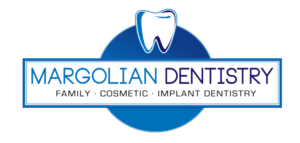Whenever anyone talks about BOTOX treatment, your thoughts will almost certainly be focused on wrinkle reduction. This therapy is well-known for softening fine lines around the eyes and mouth. However, there are other ways we can use BOTOX, and treatment could be especially useful if you suffer from chronic headaches and migraines caused by TMJ disorder.
What Is TMJ Disorder?
TMJ disorder in Whitby, also sometimes called temporomandibular dysfunction, is a painful problem affecting your jaw joints. These are the joints that hinge your lower jaw, and when they work properly, you can move your jaw up and down and from side to side so you can eat, talk, laugh and yawn without pain or discomfort. If these jaw joint muscles become inflamed, it can be painful to move your lower jaw.
Other TMJ symptoms include pain when you open your mouth, and you may find it tricky or impossible to open your mouth wide or move your jaw from side to side without discomfort. As you try to move your lower jaw, you may notice it makes a grinding or popping sound. TMJ can also cause problems with your hearing and tinnitus. The pain can extend into your neck and shoulders and cause headaches, especially when you wake up in the morning.
TMJ is frequently associated with teeth clenching and grinding, a problem called bruxism in Oshawa and which often occurs during sleep. Clenching and grinding is a destructive habit that can significantly damage your teeth, gums and jaws. The pressure of clenching and grinding can also cause chronic headaches or migraines.
Diagnosing TMJ Disorder
If you suspect you may have TMJ disorder, come and see us at Margolian Dentistry. Our dentist can gently examine your jaw joints and check the condition of your teeth for signs of bruxism. We may also take diagnostic images, including x-rays or a cone beam CT scan, to assess the condition of your jaws. One way we can treat chronic clenching and grinding is to provide a night splint, a custom-made dental device that fits over your teeth and prevents your teeth from contacting. When you try to clench and grind, your teeth glide harmlessly against the night guard. However, BOTOX is another useful tool we can use, and some people may prefer this to wearing a might guard or as an additional treatment for bruxism.
How Can BOTOX Treat TMJ Disorder?
BOTOX reduces the appearance of fine lines by relaxing facial muscles, creating a smoother appearance, and it works similarly to treat TMJ disorders. Our skilled dentists can inject tiny amounts of BOTOX to block nerve signals causing the muscle movements that cause TMJ disorder in Ajax. After treatment, your muscles begin to relax, and you no longer clench and grind, alleviating the pain in your jaw joints and gradually increasing your jaw movements without feeling discomfort. It can take two or three weeks for the muscles to relax completely, but this treatment can last between six and nine months. Over time, the muscle contractions can decrease, so repeating this treatment with the same frequency may not be necessary. Not everyone will require repeat treatments.
Another application for BOTOX is to reduce the appearance of a gummy smile. Ideally, when you smile, you will only show a minimal amount of gum tissue, but some people have an overactive muscle in their upper lip, pulling the lip upwards whenever they smile or talk and exposing too much of their upper gum. BOTOX can help relax this overactive muscle, creating a more naturally appealing smile where only the ideal amount of gum tissue shows.

